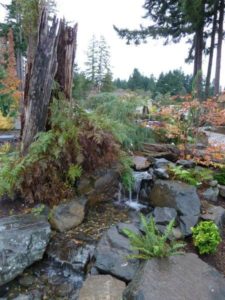Wildlife Friendly Landscapes
go.ncsu.edu/readext?645125
en Español / em Português
El inglés es el idioma de control de esta página. En la medida en que haya algún conflicto entre la traducción al inglés y la traducción, el inglés prevalece.
Al hacer clic en el enlace de traducción se activa un servicio de traducción gratuito para convertir la página al español. Al igual que con cualquier traducción por Internet, la conversión no es sensible al contexto y puede que no traduzca el texto en su significado original. NC State Extension no garantiza la exactitud del texto traducido. Por favor, tenga en cuenta que algunas aplicaciones y/o servicios pueden no funcionar como se espera cuando se traducen.
Português
Inglês é o idioma de controle desta página. Na medida que haja algum conflito entre o texto original em Inglês e a tradução, o Inglês prevalece.
Ao clicar no link de tradução, um serviço gratuito de tradução será ativado para converter a página para o Português. Como em qualquer tradução pela internet, a conversão não é sensivel ao contexto e pode não ocorrer a tradução para o significado orginal. O serviço de Extensão da Carolina do Norte (NC State Extension) não garante a exatidão do texto traduzido. Por favor, observe que algumas funções ou serviços podem não funcionar como esperado após a tradução.
English
English is the controlling language of this page. To the extent there is any conflict between the English text and the translation, English controls.
Clicking on the translation link activates a free translation service to convert the page to Spanish. As with any Internet translation, the conversion is not context-sensitive and may not translate the text to its original meaning. NC State Extension does not guarantee the accuracy of the translated text. Please note that some applications and/or services may not function as expected when translated.
Collapse ▲
image by Kathleen Moore
We can enhance natural features in our yards to create wildlife-friendly habitats. Such habitats should include the four major resources that wildlife requires to survive: cover (such as clusters of trees and shrubs for wildlife to escape from predators), water from ponds or water gardens, places to raise young (including nesting sites and birdhouses), and year-round food sources.
To enhance the variety of habitats and food sources for wildlife, include diverse plant species. Increase forage for pollinators by including at least three or more species blooming in each growing season. Incorporate plants that produce soft mast or hard mast (fruits and seeds) such as Viburnum nudum and Rudbeckia fulgida.
Because species have different habitat preferences, a yard with diverse canopy heights (low-growing ground covers, herbaceous perennials, shrubs or small trees, and large trees) will provide shelter and nesting sites for the greatest variety of birds and other wildlife.
For tips on planning wildlife habitats, see the wildlife chapter and the native plants chapter in the NC Extension Gardener Handbook. The Extension Gardener Plant Toolbox ‘Find a Plant’ feature also includes options that can sort plant species by the type of wildlife they attract.
—Hanna Smith
Additional interesting articles are linked from the index page.
Extension Gardener Newsletter



